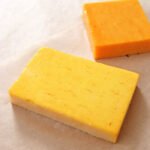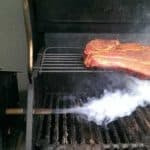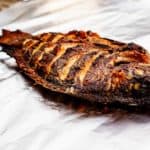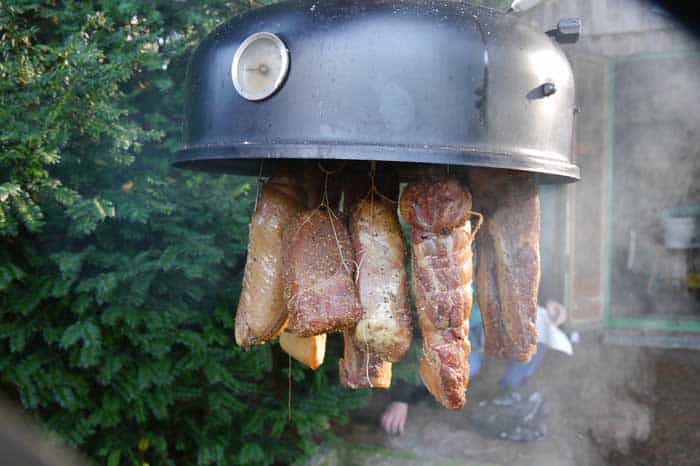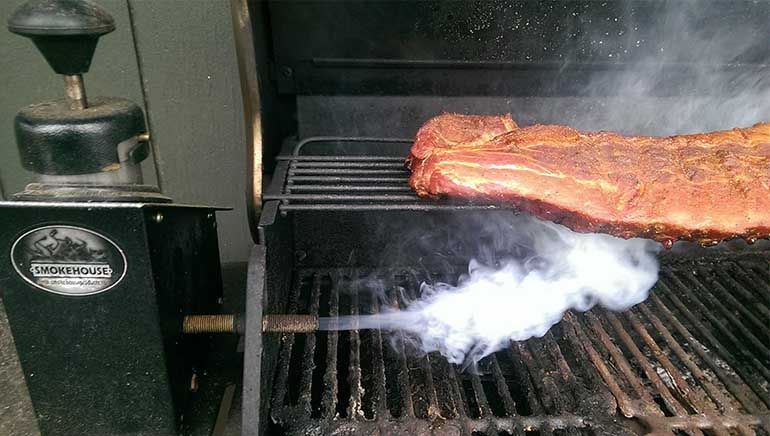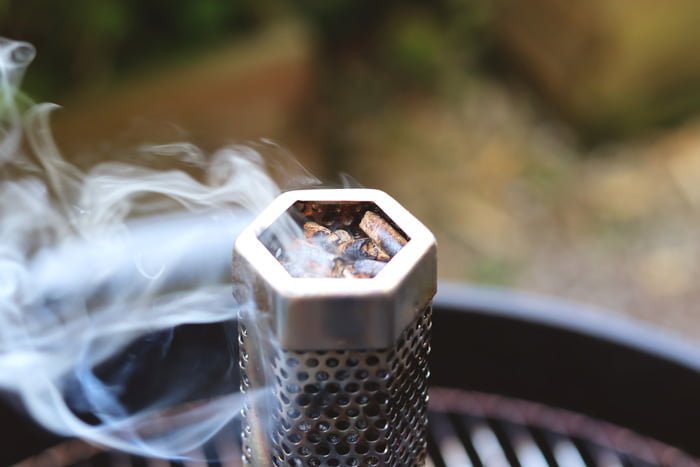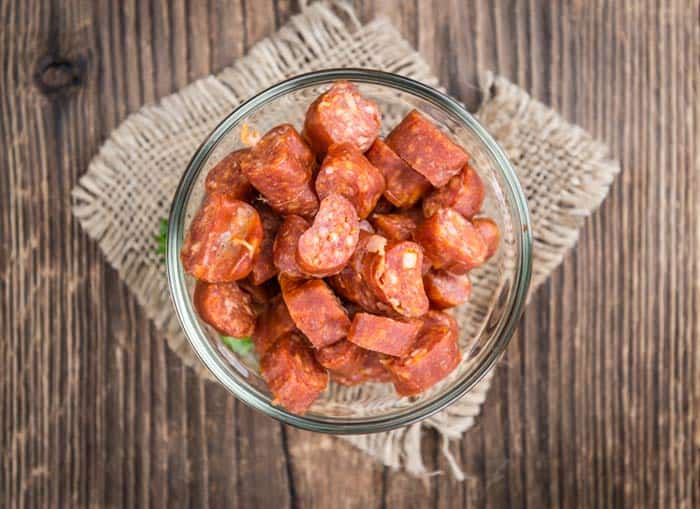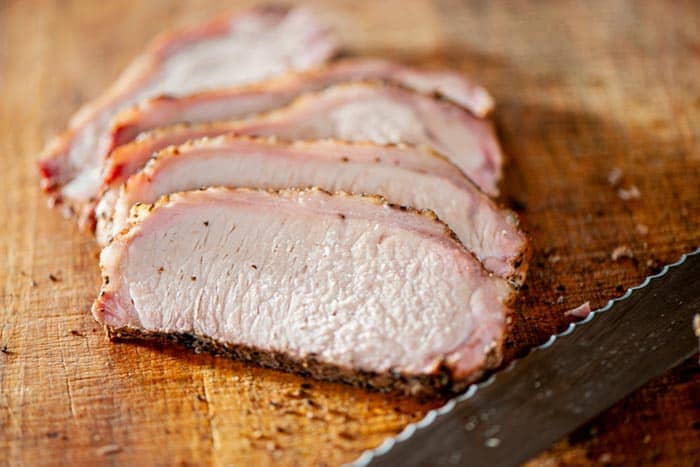Smoked cheese has a delicious, nutty flavor that’s unlike anything you will have tasted at the store. The good news is that it’s a lot simpler to make at home than you might think. Learn how to cold smoke cheese the easy way.
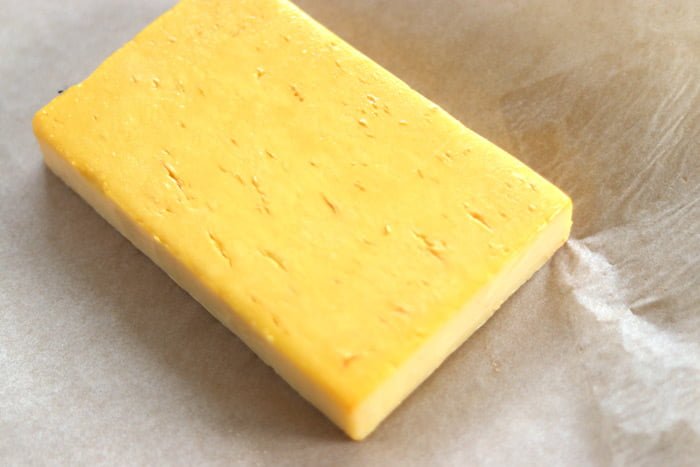
Is anything that cheese can’t solve?
It’s the perfect topping or side to any good BBQ dish, and delicious enough to stand alone.
Here’s how to smoke the best cheese this year.
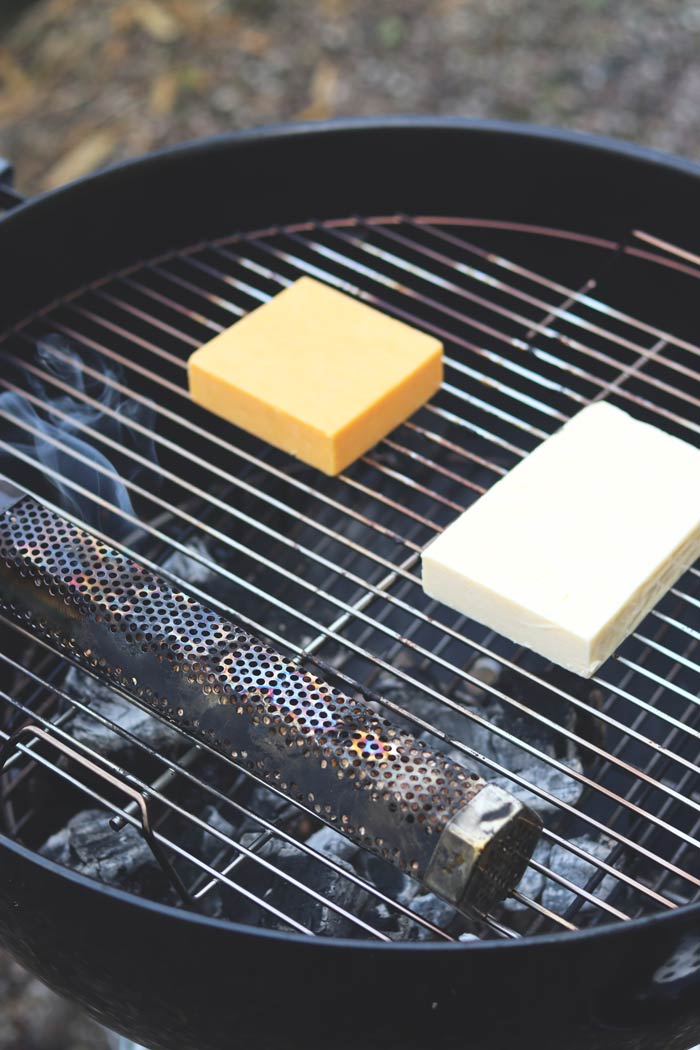
Best Cheese to Smoke
Any cheese that doesn’t slip through your smoker grates can be cold smoked. For the best results, I recommend choosing something hard and mild.
Soft cheeses are quick to absorb smoke, which can be difficult to get to grips with. It doesn’t take long for them to be ruined with overpowering flavor. They can also melt easily. Talk about mess.
Start with something like gouda or mild cheddar. They’re robust enough to stand up to smoking temperatures, and will take on flavors well without being dominated by them. It’s why they’re both our key ingredients for our smoked mac and cheese recipe.
Other popular cheeses for smoking are:
- Cheddar
- Mozzarella
- Pepper Jack
How Long to Smoke Cheese
The good news is that the actual smoking process takes just two hours. The bad news is that the cheese will need to be vacuum sealed and left to rest in your refrigerator for two weeks before it is ready to eat. This will allow its taste to mellow and develop, letting it move away from the acrid and harsh taste it often has immediately after being smoked.
What Temperature to Smoke Cheese?
Cheese can start to morph and melt at temperatures between 80°F and 90°F, so it’s important to keep your smoker below this. Use a smoker thermometer to ensure that you don’t go over this.
How to Store Smoked Cheese
For the best results, vacuum seal the cheese before storing in refrigerator. If sealed, many cheese can last for at least a year. Avoid freezing it. This will turn it crumbly instead of the smooth and creamy texture we want.
How to Smoke Cheese
Here are 9 quick and easy tips to help you cold smoke the best cheese.
Pick a Cold Day to Smoke
Cold smoking cheese is best done during the fall or winter months when the outside temperature is no higher than 60ºF (15°C).
Warmer temperatures can cause your cheese to melt. This is especially true if you’re relying on cooling it instead of using a cold smoker.
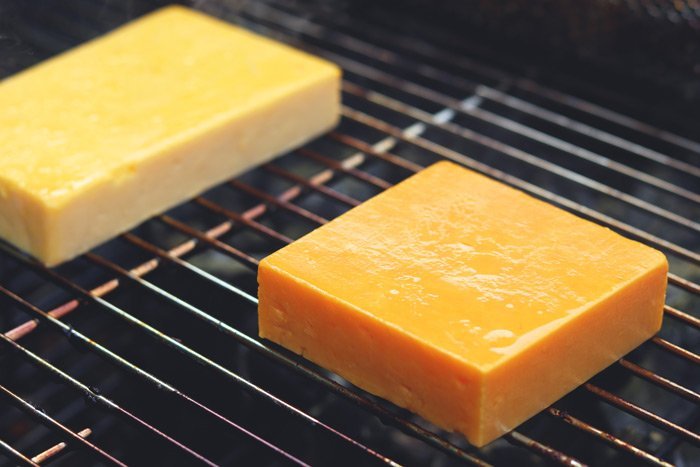
Cut the Cheese Into Smaller Portions
To help smoke penetrate the entire cheese block, prepare it by removing the rind and cutting it into small wedges four inches in length. This will help reduce total smoking time by exposing more surface area to the smoke.
If you prefer a softer inside with a smoky skin, cut it into larger pieces.
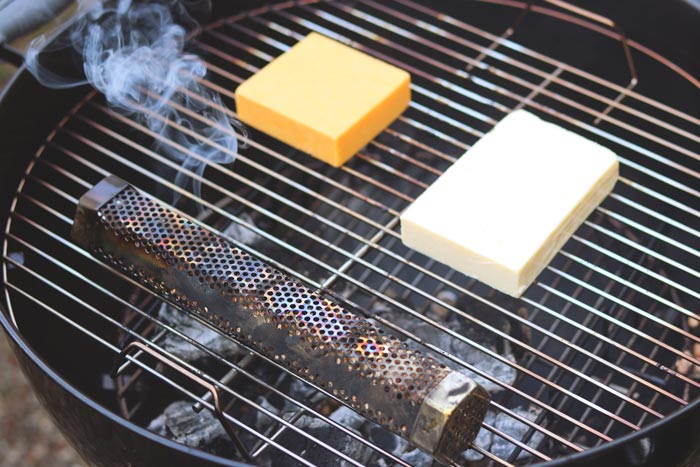
Bring It to Room Temperature
While there’s no reason you can’t smoke frozen or chilled cheese, preparing it from room temperature will give you the best results.
The structure of some cheeses can morph rapidly when smoked from frozen, making them lose their texture, color and flavor.
Allow your cheese to rest at room temperature for one or two hours before smoking. Wipe off any moisture to help it develop better skin.
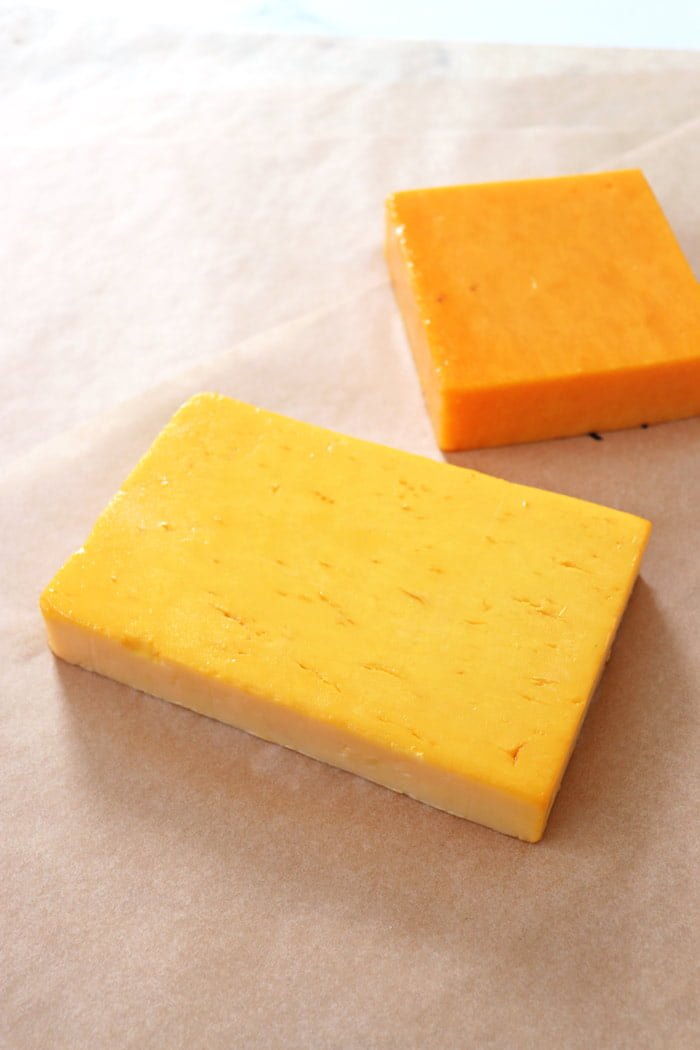
Choose the Right Smoking Wood
The importance of a good smoking wood can’t be understated. You need to pick something that matches your chosen cheese perfectly. We’ve seen before how important it is to get the best wood for smoking turkey, brisket, or pork. The same is true for cheese.
The best smoking wood for cheese is applewood or other delicate fruitwoods like cherry and pecan. This is especially true if working with soft and mild cheese.
If you are smoking something hard and strong in flavor, try something equally punchy like oak or hickory. You can even mix things up with nutshells or dried tea leaves.
Keep the Temperature Low
Aim to keep the cold smoking temperature at below 90°F. Anything above this temperature could lead to your cheese sweating or melting.
One of the best ways to help keep a low temperature is to use ice pans. These are just like the water pans we use for hot smoking, but are filled with ice instead. This will help to keep the ambient temperatures in your chamber cool, and minimize the effects of any disruption from the weather.
Turn Regularly
For consistent smoke penetration, you should ensure all the surfaces of your cheese gain sufficient exposure to the smoke. Be sure to turn your cheese every 15 to 30 minutes.
Pay Attention to Time
The length of time you’ll need for cold smoking will depend on the type of cheese you’re using, and your taste preference.
It can take anywhere from 30 minutes to several hours, with longer sessions developing stronger flavors. It’s also important to note that any moisture on the block will cause it to collect more smoke particles, intensifying its taste.
In general, softer cheeses need a shorter smoke than harder ones. But this will take a bit of experimenting with to get right. Many pro smokers learn to distinguish times based on the finishing color of the rind.
Cheese tends to absorb flavors faster than meat. If it’s over exposed to smoke, it will carry an acrid, overpowering taste.
If you are using a hard of semi-hard cheese, like gouda or cheddar, leave it in the smoker for about 2 hours. It should develop a good color without being overexposed to smoke.
Keep the Smoke Light and Constant
When it comes to smoking cheese, you want to keep your smoke light and ensure that you’re maintaining a continuous stream. Be sure to add a small number of wood chips or pellets at regular intervals.
How to Set Up Your Smoker
You can use your grill here, or if you have a pellet or offset smoker. Just make sure that it has good ventilation.
Rather than ramp up the heat, we’re just using your smoker to hold the cheese while we cold smoke it. You will need either a tube smoker or cold smoke generator for this.
Use a mild wood like apple, cherry, or pecan. Try to steer away from strong aromas like oak or hickory for now, until you start experimenting with harder cheeses.
Light your tube smoker or generator, making sure there is only smoke and no flames. Use a grill surface thermometer to make sure that heat doesn’t ever go above 90°F (32°C).
Now on to the fun part.
Place your wedges on the smoker grates. Make sure there’s enough space between them to allow good airflow.
Close the smoker or grill lid and leave for a couple of hours. This should be enough time to allow the smoke to do its thing without letting it get to the point where the flavors overpower your cheese.
Once two hours is up, remove the wedges from the chamber and wrap in parchment paper. You want to let it breathe a little bit, so don’t wrap it too tightly.
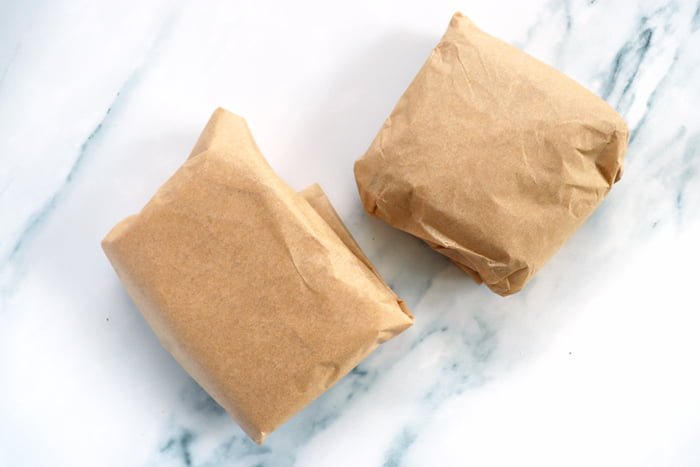
Transfer the wrapped cheese to the refrigerator and leave for 24 hours. After this, remove it from the parchment paper and vacuum seal it, or use plastic wrap and store in an airtight container.
After this, leave in refrigerator for 1-2 weeks. This will help the smokey flavors to mellow slightly and balance out.
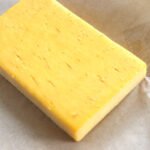
Smoked Cheese [Cheddar & Gouda]
Equipment
- Charcoal smoker
- Smoke tube
- Applewood
- Grill surface thermometer
- Parchment paper
Ingredients
- 8 lbs cheese Gouda or mild cheddar
Instructions
- Set up the smoker for cold smoking using either a tube smoker or a cold smoke generator. Then, add applewood. Use a grill surface thermometer to ensure the temperature does not exceed 80°F (26°C).
- Place cheese blocks on smoker grates. Close lid and leave for 2 hours. Turn cheese over every 30 minutes.
- Remove cheese from smoker and wrap in parchment paper. Avoid wrapping too tightly, and allow cheese to breathe.
- Transfer the cheese to the refrigerator and leave it for 24 hours. After this, unwrap the cheese and transfer it to a vacuum-sealed bag. Leave to rest in refrigerator for 1-2 weeks. The longer you leave the cheese, the better the taste will be.
